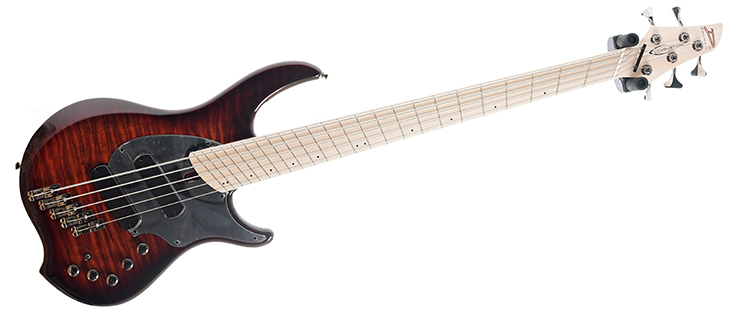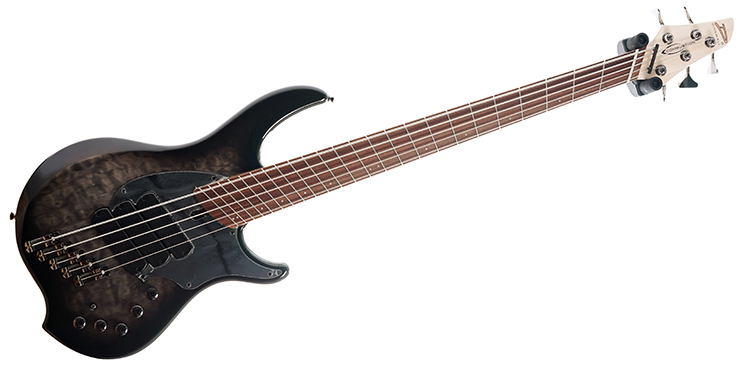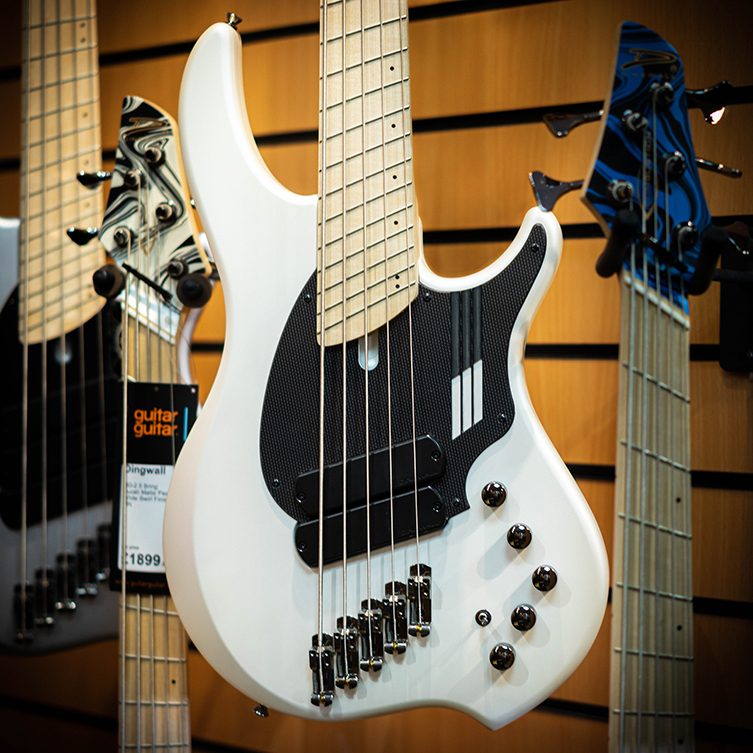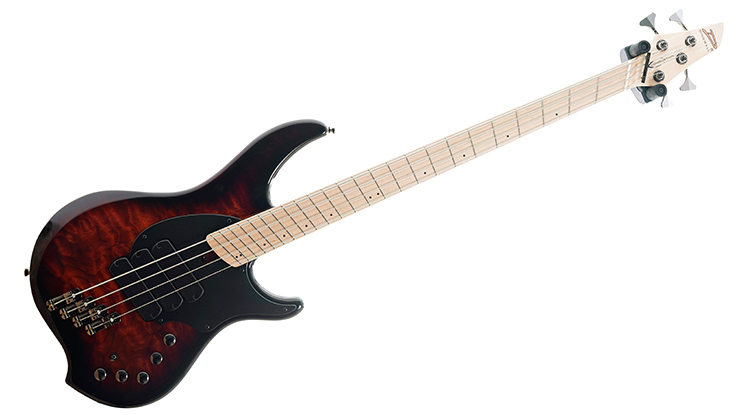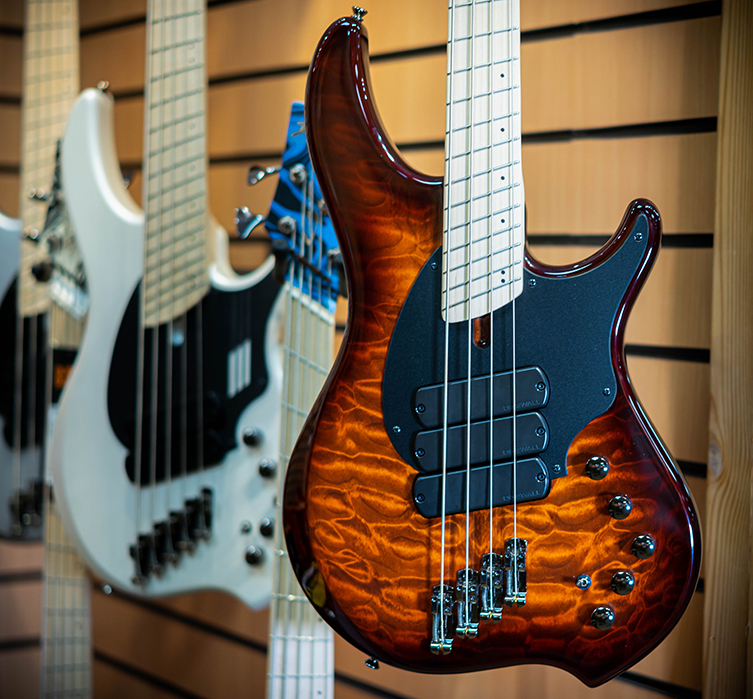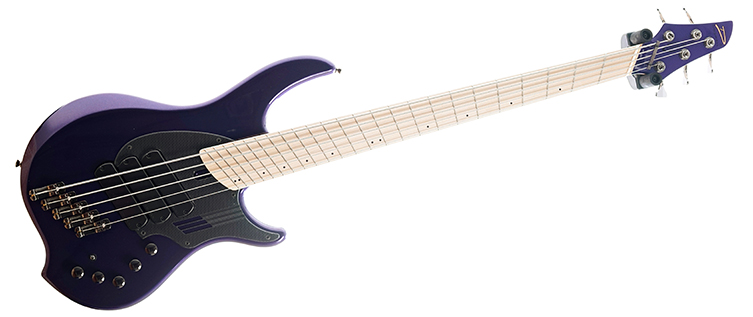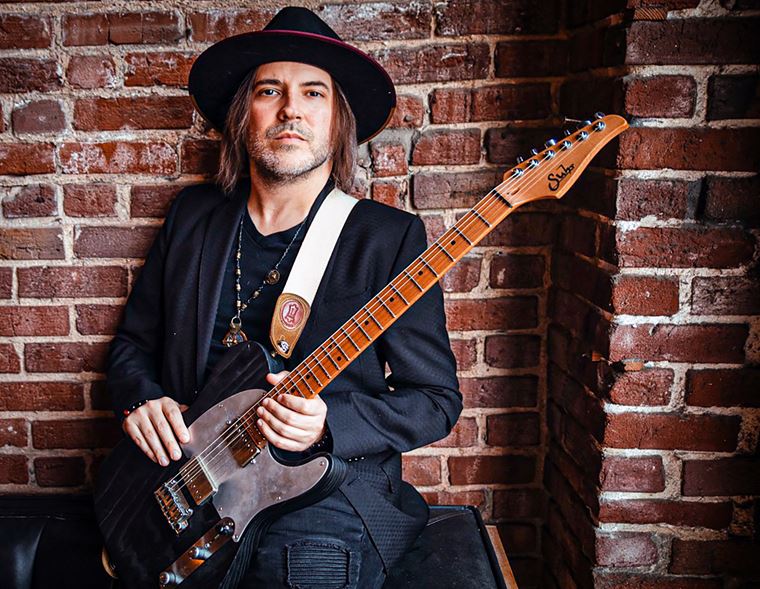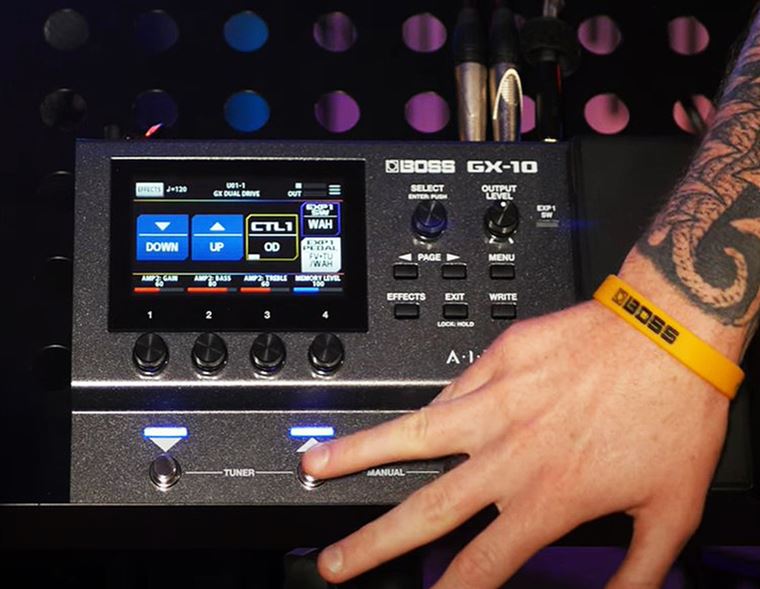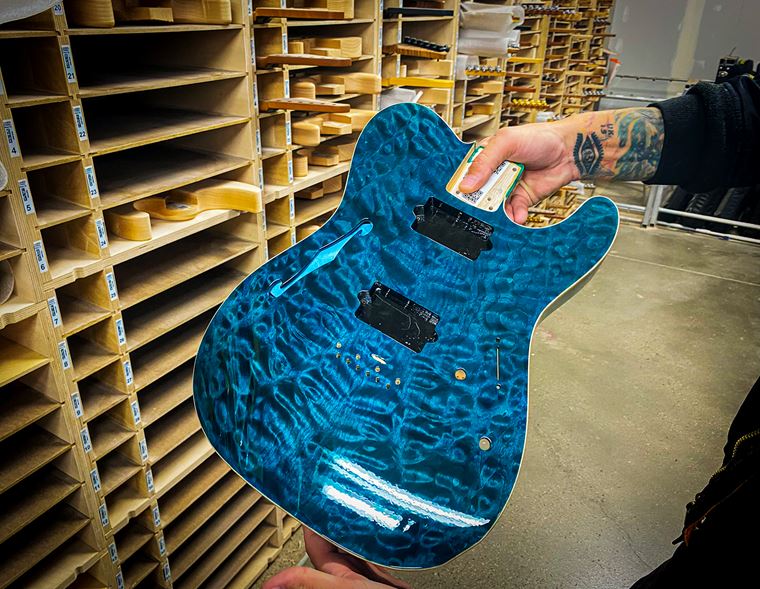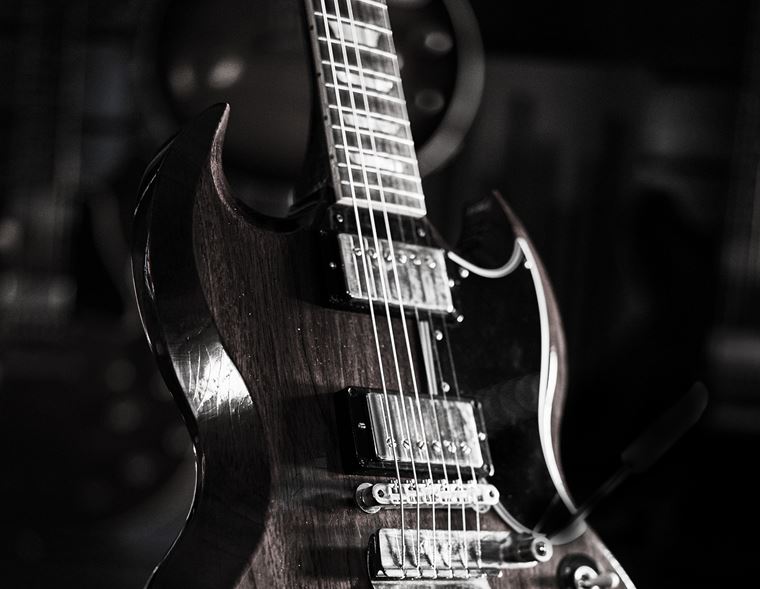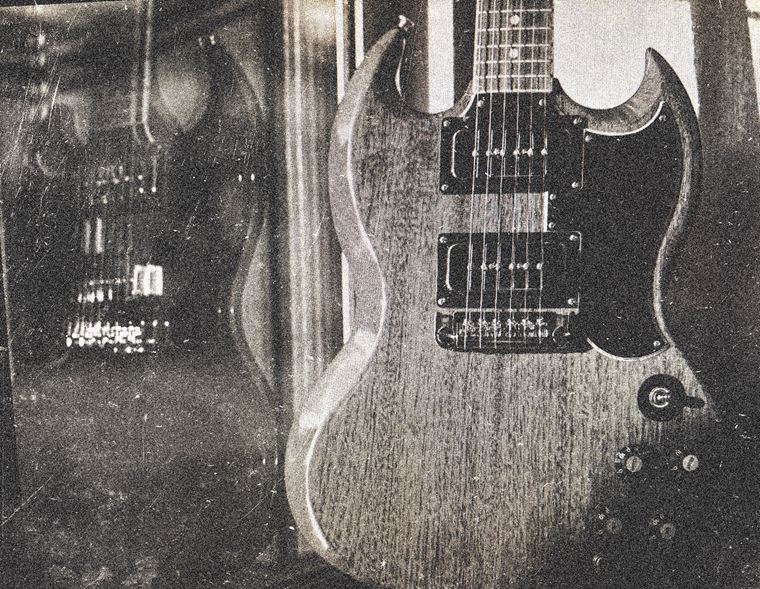A Closer Look: Dingwall Basses (Updated for May 2021)
Fanned Frets.
A reasonably familiar sight to forward-thinking players today, but these things don’t just happen on their own.
Such radical, game-changing ideas need to be spearheaded from brave, smaller companies who spark the idea off in the first place, before the bigger companies take the idea and run some years down the line.
Dingwall are just such a company. Inspired by the way that grand piano strings are laid out, Dingwall set out to achieve perfect clarity and intonation, right down to the low ‘B’ of their 5 string instruments. Fanned frets are the result, and whilst Dingwall didn’t invent the form (fanned frets have been around on instruments for 500 years), you can tell just by looking at a Dingwall bass that these guys are obsessed about getting this just right.
We've just recieved a new shipment of Dingwall basses, so let's have a little look at the brand...
Fanned Frets?
So, for those who aren’t clued in about fanned frets, it’s a pretty contemporary approach to the age-old problem of intonation versus playability. If you play lower tunings, or instruments with extra strings (5 string basses, 7 and 8 string guitars etc), then you will probably notice that it’s difficult to have those lower strings feel comfortable and play in tune without a compromise happening somewhere else on the fingerboard. Extending the scale length can help the lower strings, but that inversely affects the higher strings: you lose playability.
To counteract this issue, the notion of a multiscale was introduced. Put simply, an instrument described as multiscale has a neck with two scale lengths. The smaller of the two lengths is used on the higher, thinner strings. This ‘morphs’ into a longer scale length for the heavier strings. The frets, therefore, are ‘fanned’ – arranged at precise angles that kind of resembles a fan when you look straight on at the fingerboard – to fully incorporate both scale lengths. This set up is carried through the instrument’s bridge and pickup positioning, too. Take a look at any Dingwall bass, for example, and you’ll see slanted hardware and pickups, all arranged precisely to make the most of this radical building style.
The Dingwall Difference
Dingwall basses are based in Saskatchewan, Canada. Their goal is to bring the very best out of their basses and your playing. Sheldon Dingwall first came across fanned frets in the early 90s. A guitar builder called Ralph Novak was his inspiration, and Sheldon today cites Novak as being the ‘father of modern multiscale instruments today’. Sheldon concentrated on basses, and 5 string basses in particular. His first creations caused a huge sensation with producers and studio engineers: the clarity and intonation over the entire fretboard was something that none of them had seen before.
The Dingwall Combustion
The Dingwall Combustion is the model you’ll see perhaps most often. These are built in China and returned to Canada for a two hour check, which includes a fret-level and full set up. This means that you can enjoy all of the cutting-edge Dingwall benefits at a vastly more affordable price. The necks are all 5-piece Maple, for strength and integrity. The bodies are made from Swamp Ash, a popular tone wood for solid body instruments.
As for the multiscale, a typical 5 string Combustion model will have scale lengths of 34” at the high G and 37” at the low B. A radius of 9.45” remains throughout the range.
Custom pickups are the order of the day. FD-3N units are used in all Combustion basses, and these are made to Dingwall’s specifications. These use neodymium magnets to bring a high output sound and can be intricately sculpted via the active tone controls found on all models.
The Dingwall Combustion is available in a range of stunning transparent finishes along with smoked chrome hardware designed by Dingwall and made by Hipshot. The bridge, for example, has a custom riser system for extra adjustability. Even the jack input has been considered: this most overlooked elements of any instrument’s build is perhaps one of the most important! Dingwall use quality Switchcraft jacks for strong signal transference and longevity.
Dingwall NG
The Dingwall NG models are very popular. The 'NG" stands for Nolly Getgood (amazing name), Periphery's bassist. These are his signature basses and they are available in both 4 and 5 string iterations. The NG models (the '2' and '3' denotes the number of pickups), much like the Combustion, really typifies the Dingwall vibe: modern, technical and very polished! These are for players who appreciate lots of power and precision. Bassists who need to achieve demanding, melodic, contemporary bass parts with naturally flock towards the design and performance of these instruments. Periphery fans are an obvious touchstone, but these basses can go far in other directions, too.
The Dignwall NG shares many of the same characteristics as the Combustion in fact, including the body shape and general layout. However, there are a two significant differences with the body wood and the pre-amp, not to mention a plethora of limited edition finishes! Firstly, the body of these NG models is made of Alder, instead of the customary Swamp Ash of the Combustion model. Swamp Ash is looser and more resonant. Alder is tighter and snappier. In bass terms, Alder is 'faster' in response, so tehcnical parts have no 'flab', as it were.
The hardware change-up is impressive: we’re talking about things like a Darkglass tone capsule preamp. Darkglass are makers of some of the best bass tech, pedals and preamps around, so this is a real sign of quality. These pre-amps are custom made for Dingwall, so you cannot get these exact pre-amps anywhere else. Typically, they are 3-band systems, with power tone-shaping capabilities. Hipshot tuners round off a thoroughly professional general specification to what is an abundantly impressive range of basses.
Dingwall D-Roc
One of our favourite Dingwall bass designs is the D-Roc. Based on a certain 'T-Bird' classic bass, the D-Roc is a lightweight and perfectly balanced instrument with a huge amount of rock attitude. A set of no less than 3 FD-3N pickups put out a very punchy voice, not to mention a massively confident look! An EMG 3-band EQ and rotary selector will give you a great hadnful of agressive tones to boot. Special hardware for this model includes open back tuners (to lighten the load and maintain the instrument's balance and a bridge with individual saddles for each string. This minimizes interference and promotes strong, true tones as well as better tuning stability. If you are looking to make a statement with your instrument, this is the one to do it, especially if you choose a colour like the fabulous aquamarine!
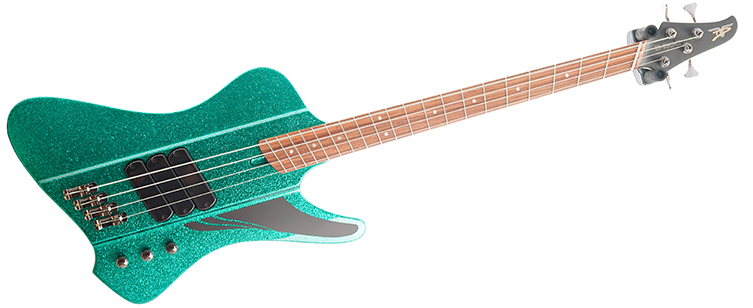
In Conclusion
Dingwall basses are exciting, quality instruments for players who like to explore the cutting edge of construction and design concepts. Modern Prog and Metal players will love them, naturally, but we see these as appealing to Jazz, Fusion and Funk bassists too. Any musical situation that requires precision and high-performance from the bass will most certainly be a place that suits a Dingwall bass.
Check out all of our current stock of Dingwall basses right here on the site, and click through to buy yours. If you are lookong for a Dingwall bass, nobody else has as many in stock as we do right now!
Click to View our Selection of Dingwall Basses

